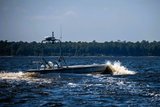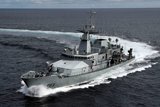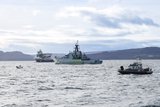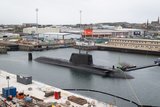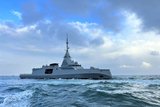Royal Navy to receive four new tankers
The Royal Navy (RN) is to receive a new generation of 37,000-tonne tankers to maintain its ability to refuel at sea and will provide fuel to warships and task groups. The Ministry of Defence (MOD) made the announcement in a 22 February 2012 statement.
The new Military Afloat Reach and Sustainability (MARS) tankers will support deployed amphibious, land and air forces close to the shore, and will be able to operate helicopters. At over 200 metres long, the four tankers will be approximately the same length as 14 double decker buses and can pump enough fuel to fill two Olympic sized swimming pools in an hour.
The new vessels are planned to enter service from 2016, replacing existing Royal Fleet Auxiliary (RFA) single hulled tankers.
Minister for Defence Equipment Support and Technology, Peter Luff, announced that Daewoo Shipbuilding and Marine Engineering (DSME) is the Government’s preferred bidder for the deal. This represents the best value for taxpayers’ money, with £452 Million to be spent on the four new vessels to support the Royal Navy on operations around the world.
A number of British companies took part in the competition, but none submitted a final bid for the build contract. In light of this, the best option for Defence and value for money for taxpayers is for the tankers to be constructed in South Korea by DSME.
According to the MOD, UK companies will however benefit from £150m of associated contracts comprising £90m on UK contracts for the provision of key equipment, systems, design and support services - the winning design is being provided by UK company BMT Defence Services; and £60m investment in the UK from customisation, trials and specialist engineering support.
The tankers are part of a multi-billion pound investment programme for the Royal Navy, which includes Type 45 destroyers, Queen Elizabeth Class aircraft carriers and Astute Class attack submarines, employing thousands of people in the UK.
More from Naval Warfare
-
![How the UK Royal Navy is powering up its hybrid fleet to combat new threats]()
How the UK Royal Navy is powering up its hybrid fleet to combat new threats
Since it announced its move towards a new “hybrid navy” earlier this year, the force has announced a number of new uncrewed technologies in the works.
-
![US and UK to begin Trident II D5 Increment 8 in October 2026]()
US and UK to begin Trident II D5 Increment 8 in October 2026
Trident II D5 Increment 8 will involve improvements to the shipboard navigation subsystem for the US Ohio and Columbia and the UK Dreadnought and Vanguard submarine classes.
-
![What capabilities has the US deployed in the Caribbean and South America to engage “drug boats”?]()
What capabilities has the US deployed in the Caribbean and South America to engage “drug boats”?
The US arsenal includes amphibious assault and littoral combat ships, cutters, destroyers, landing platform docks, a nuclear-powered fast attack submarine, drones, ISR aircraft, helicopters and fighters.
-
![HMS Agamemnon: details of the dive and what the Astute-class signifies for the UK Royal Navy]()
HMS Agamemnon: details of the dive and what the Astute-class signifies for the UK Royal Navy
As HMS Agamemnon moves closer towards joining the UK’s in-service submarine fleet, how does the sixth Astute-class fit into the Royal Navy’s defence strategy?
-
![French Navy frigates to align with Hellenic Navy after Aster missile enhancement]()
French Navy frigates to align with Hellenic Navy after Aster missile enhancement
The FDI frigates will have an enhanced warfare capability that matches the configuration of ships ordered by Greece.









